Celtics forward Jayson Tatum was able to stay in the game after landing on Giannis Antetokounmpo‘s foot and turning his left ankle on a three-point attempt in the third quarter of Sunday’s matchup with the Bucks (Twitter video link). Speaking to reporters after pulling out the win, Tatum downplayed the injury, referring to his ankle as just “a little sore.” However, he wasn’t pleased with the fact that no foul was called on Antetokounmpo on the play.
“There are certain calls you can’t miss,” Tatum told reporters, per Brian Robb of MassLive.com. “Your job is to protect the guys on the court, protect the shooter. That’s something I could have been out for six weeks or whatever. For it to be a no-call, let alone they didn’t even get to review it or look at it, right?”
Head coach Joe Mazzulla also referred to the non-call as “ridiculous” during his post-game comments, though Tatum credit the head coach and his staff for helping him cool off in the moment. As Robb points out, the star forward has already racked up four technical fouls in the first three weeks of the season — he was able to avoid a fifth on Sunday.
“I mean, coaches kind of calmed me down,” Tatum said. “It’s a tough situation. I get my fair share of techs throughout the season, rightfully so, unrightfully so. … That s–t is frustrating when all you get is a ‘Sorry we missed it.’ Your ankle is sore and you got to figure it out. I definitely was frustrated.”
The Celtics have a back-to-back set vs. Atlanta and at Brooklyn on Tuesday and Wednesday, so Tatum will have just one day to rest the ankle, assuming he doesn’t plan to sit out any games.
Here’s more on the Celtics:
- As he was heading back up the court in the second quarter of Sunday’s game after being whistled for an offensive foul, Antetokounmpo offered his hand to Jaylen Brown for a handshake, then pulled it away when Brown reached to shake it (Twitter video link). Antetokounmpo laughed and quickly offered his hand back to Brown with a smile, but the Celtics wing didn’t make a second attempt to shake it and suggested after the game that he didn’t see the humor in the moment, per Jamal Collier of ESPN. “Giannis is a child,” Brown said. “I’m just focused on helping my team get a win. And that’s what we did tonight.”
- Antetokounmpo was surprised to hear of Brown’s post-game comments, telling reporters in his own media session that he plays the game with “joy” and that he and Brown have joked around on the court in the past. “I’m just going to continue to be me,” Giannis said, according to Collier. “And at the end of the day, if I’m called a child, so be it.” Brown committed a hard foul on Antetokounmpo in the fourth quarter and was called for a flagrant-1, but said after the game that it was unrelated to the interaction earlier in the game.
- Sunday was Brown’s first appearance following a four-game absence due to a hip flexor injury that had been nagging at him since training camp. As Souichi Terada of MassLive.com relays, Brown provided a positive health update after the Celtics’ win. “I’ve been playing through it,” he said. “Didn’t really get any better while I was playing, so we decided it was best to get a little bit of rest to get off of it. I think that did me well. Today, I felt a little bit more of that burst. I felt a little stronger physically and able to go both directions. Something good to build on.”
- Payton Pritchard‘s play this fall has been an early-season highlight for Boston, Terada writes for MassLive.com. Pritchard contributed 18 points in Sunday’s victory and has now scored at least 15 points in nine of the team’s first 11 games. After the game, Jrue Holiday referred to Pritchard as “somebody you love to play with,” while Brown said his teammate has been “excellent” so far this season. “His growth has been incredible to watch,” Brown added. “Payton has been making those steps and he’s a big-time player.” Pritchard is in the first season of a four-year, $30MM extension that he signed in 2023.
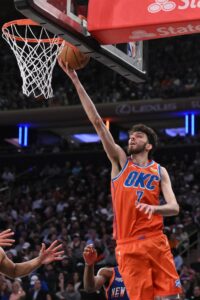 While the Thunder say Holmgren is expected to return to action later in the 2024/25 season, he’ll be out for an extended period. The plan is to reevaluate him in eight-to-10 weeks, per the club.
While the Thunder say Holmgren is expected to return to action later in the 2024/25 season, he’ll be out for an extended period. The plan is to reevaluate him in eight-to-10 weeks, per the club.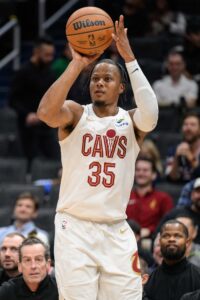
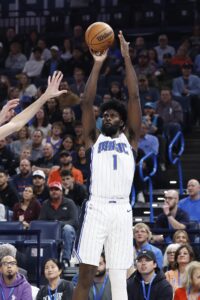
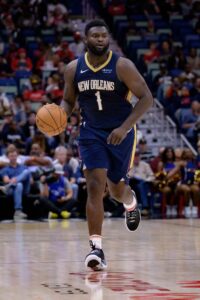 According to the Pelicans, Williamson will be out indefinitely, with further updates provided as appropriate. While the club didn’t provide any sort of recovery timeline for the former No. 1 overall pick, it sounds like it’ll be a week-to-week injury rather than a day-to-day issue. Shams Charania of ESPN says (
According to the Pelicans, Williamson will be out indefinitely, with further updates provided as appropriate. While the club didn’t provide any sort of recovery timeline for the former No. 1 overall pick, it sounds like it’ll be a week-to-week injury rather than a day-to-day issue. Shams Charania of ESPN says (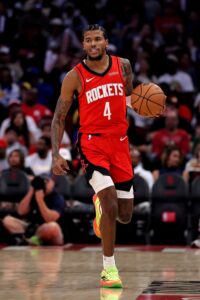 Let’s use Rockets guard
Let’s use Rockets guard